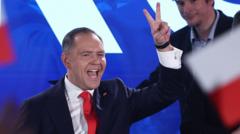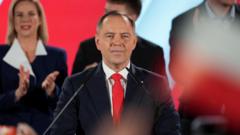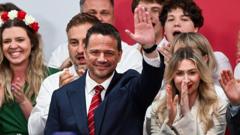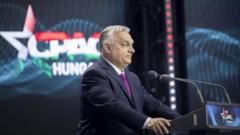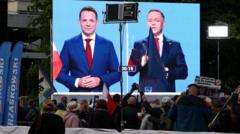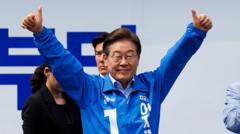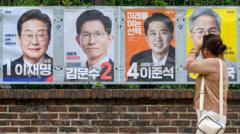In Poland, a crucial presidential runoff this Sunday highlights a generational gap, with younger voters largely disinterested in the centrist and nationalist candidates competing for the nation’s top office. The election could have significant implications for the country’s political landscape and its role within the European Union, especially as the candidates fail to capture the youth vote that had previously leaned towards anti-establishment options.
Presidential Race in Poland: Young Voter Discontent Shapes Election Outcome

Presidential Race in Poland: Young Voter Discontent Shapes Election Outcome
Young voters express their disenchantment as two mainstream candidates vie for presidency in Poland's pivotal runoff.
A tight presidential election is approaching in Poland, and it is heavily influenced by the sentiments of young voters, a demographic crucial to the nation's future. However, both candidates in the upcoming runoff face a significant hurdle: the majority of young Poles express little enthusiasm for either of them. This presents an unpredictable outcome for an election deemed essential for the direction of Poland, which stands as a central economic and military force in the Eastern European Union.
In the initial round on May 18, voters aged 18 to 29 largely backed anti-establishment candidates who ultimately did not advance. Instead, they turned away from the two major political parties represented in this runoff—the centrist Civic Platform, led by Donald Tusk, and the Law and Justice party, previously in governance and headed by Jaroslaw Kaczynski.
Now, the contest pits Rafal Trzaskowski, the liberal mayor of Warsaw supported by Tusk’s party, against Karol Nawrocki, a former boxer and historian with the backing of Law and Justice. Both candidates have a tough road ahead in capturing the attention and support of young voters who feel disconnected from traditional politics. As the election date nears, the fate of Poland's political future still hangs in the balance, underscoring the importance of understanding and engaging this crucial demographic.
In the initial round on May 18, voters aged 18 to 29 largely backed anti-establishment candidates who ultimately did not advance. Instead, they turned away from the two major political parties represented in this runoff—the centrist Civic Platform, led by Donald Tusk, and the Law and Justice party, previously in governance and headed by Jaroslaw Kaczynski.
Now, the contest pits Rafal Trzaskowski, the liberal mayor of Warsaw supported by Tusk’s party, against Karol Nawrocki, a former boxer and historian with the backing of Law and Justice. Both candidates have a tough road ahead in capturing the attention and support of young voters who feel disconnected from traditional politics. As the election date nears, the fate of Poland's political future still hangs in the balance, underscoring the importance of understanding and engaging this crucial demographic.


